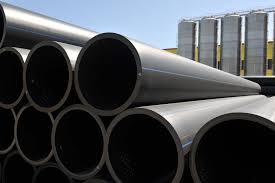Nov . 30, 2024 09:05 Back to list
PPR Water Pipe Manufacturing Process and Factory Overview
The Rise of PPR Water Pipes An Overview of Manufacturing and Quality
In the modern construction and plumbing industry, the demand for efficient, durable, and cost-effective piping solutions has led to significant innovations. Among these solutions, Polypropylene Random Copolymer (PPR) water pipes have gained prominence due to their impressive properties and versatile applications. The increasing reliance on PPR pipes has transformed the landscape of plumbing, and the factories dedicated to their production play a vital role in this metamorphosis.
Understanding PPR Pipes
PPR pipes are made from polypropylene, a thermoplastic polymer that is known for its strength, flexibility, and resistance to chemical corrosion. The random copolymer refers to the way the polymer chains are structured, resulting in enhanced mechanical properties and the ability to withstand high temperatures. This makes PPR pipes ideal for hot and cold water supply systems, heating systems, and even industrial applications.
One of the standout features of PPR water pipes is their longevity. They are known to last up to 50 years or more, making them a cost-effective solution in the long run. Moreover, PPR pipes are lightweight, which simplifies transportation and installation processes. Their smooth inner surfaces minimize friction losses and prevent the buildup of deposits, ensuring efficient water flow over time.
The Manufacturing Process
The production of PPR water pipes involves several key steps, which are carried out in specialized factories equipped with state-of-the-art machinery. The process begins with the raw materials, which include polypropylene pellets. These pellets are melted and extruded into the desired pipe dimensions. Precision is crucial here, as the diameter and wall thickness of the pipes must adhere to strict industry standards to ensure reliability and safety.
After extrusion, the pipes undergo cooling and cutting to specific lengths. Quality control is an indispensable part of the manufacturing process. Rigorous testing procedures, including pressure tests, leak tests, and dimensional checks, are conducted to ensure that the pipes meet regulatory standards and customer expectations. Many factories also implement ISO certifications to guarantee that their production processes align with international quality management principles.
ppr water pipes factory

Advantages of PPR Factory Production
The growth of dedicated PPR pipe factories has several advantages. First, centralized production allows for streamlined operations, reducing production costs and time. The factories can leverage economies of scale, translating to lower prices for consumers without compromising quality.
Moreover, specialized factories are equipped to incorporate modern technology into their processes. Automation, for example, enhances precision and reduces manual labor, leading to consistent quality in the products. These advancements in technology also promote sustainability. Factories often adopt eco-friendly practices, such as recycling waste materials and minimizing energy consumption during production.
Applications and Market Demand
The versatility of PPR water pipes has led to their widespread adoption across various sectors. They are predominantly used in residential and commercial plumbing systems, but their applications extend to heating and cooling systems, irrigation, and even industrial liquid transportation. As awareness of the environmental impact of traditional piping materials grows, the demand for PPR pipes has surged. They offer a sustainable alternative due to their recyclability and lower carbon footprint during production.
Furthermore, the global push towards infrastructure development has added to the demand for PPR water pipes. In regions where securing a clean and reliable water supply is critical, PPR pipes are increasingly seen as the solution of choice. This trend is further supported by government initiatives promoting modern plumbing solutions and sustainable construction practices.
Conclusion
The emergence of PPR water pipes and the factories dedicated to their production marks a significant advancement in construction and plumbing. Their durability, cost-effectiveness, and resistance to environmental factors make them a preferred choice for modern applications. As technology continues to evolve, and awareness of sustainable practices increases, the future of PPR pipe manufacturing looks promising. These factories play an essential role in ensuring that high-quality piping solutions are readily available, contributing to the development of resilient and efficient infrastructure worldwide. As we move forward, it will be exciting to see how innovations in this sector will further enhance the performance and sustainability of PPR water pipes.
-
32mm HDPE Pipes Coil: Durable & Flexible Water Supply
NewsAug.05,2025
-
DN100 PVC Well Casing Pipes | Durable Corrosion-Proof
NewsAug.04,2025
-
HORON 25mm PPR Plumbing Pipes - AI-Enhanced & Reliable
NewsAug.03,2025
-
HORON 25mm PPR Pipes - AI-Optimized Plumbing Excellence
NewsAug.02,2025
-
Premier HDPE Sprinkler Pipe Manufacturers | Durable Solutions
NewsAug.01,2025
-
DN500 HDPE Double Wall Corrugated Drain Pipes | Durable & Efficient
NewsJul.31,2025

